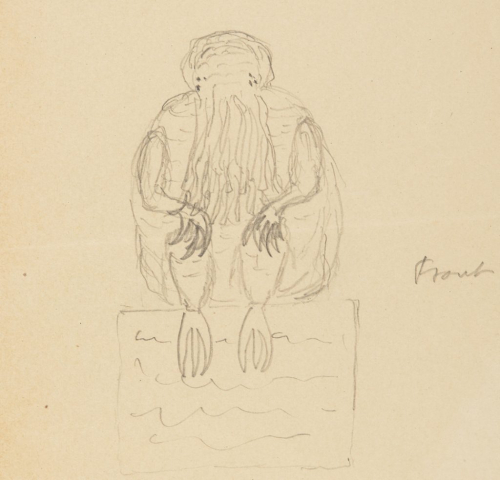H. P. Lovecraft’s race thinking is deeply imbricated with his literary output. This canonical American author’s work cannot be separated from his abhorrent views on race and cultural exchange. As consumers of media, we need to grapple with the pressing questions: How do we make sense of it? How do we engage with his work? Can we still appreciate it? Lovecraft is one example, but this exercise should be done with all cultural icons. Cultural productions are not epiphenomenal from politics; instead, they are a way of getting at the political subconscious of a society. There is much to learn by critically engaging and interrogating how cultural productions reflect and reify social structures.
— 2020 Brown University Library Exhibitions Proctor, Alberto Alcaraz Escarcega, Political Science Ph.D. student
References
Camara, Anthony. 2016. “How to Hack Lovecraft, Make Friends with His Monsters, and Hijack His Mythos: Reading Biology and Racism in Elizabeth Bear’s Shoggoths in Bloom.” Studies in the Fantastic 4: 24–47.
Frye, Mitch. 2006. “The Refinement of the ‘Crude Allegory’: Eugenic Themes and Genotypic Horror in the Weird Fiction of H. P. Lovecraft.” Journal of the Fantastic in the Arts 17(3): 237–254.
Kneale, James. 2006. “From Beyond: H. P. Lovecraft and the Place of Horror.” cultural geographies 13: 106–126.
McRoy, Jay. 2003. “There Goes the Neighborhood: Chaotic Apocalypse and Monstrous Genesis in H. P. Lovecraft’s ‘The Street,’ ‘The Horror at Red Hook,’ and ‘He.'” Journal of the Fantastic in the Arts 13(4): 335–351.
Price, Fiona. 2016. “Prosthetic Pasts: H. P. Lovecraft and the Weird Politics of History.” Genre 49(2): 135–158.
Sederholm, Carl H. and Jeffrey Andrew Weinstock, eds. 2016. The Age of Lovecraft. Minneapolis: University of Minnesota Press.

